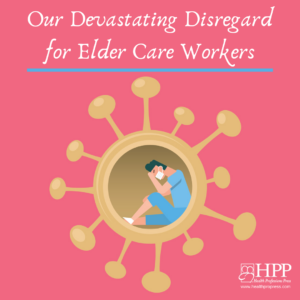
Inside the 7th Edition of Managing Health Services Organizations and Systems
Managing Health Services Organizations and Systems has served the educational and professional needs of the healthcare field over four decades. The seventh edition furthers that legacy in a completely revised and reorganized text that presents a comprehensive range of the knowledge and skills needed to effectively lead and manage health services delivery. Here is a breakdown of this new edition.
The five chapters in Part I, “The Environment,” describe the setting and provide a context for delivery of services.
- Chapter 1, “Healthcare in the United States,” identifies and describes public and private entities, knowledge about which is the grounding for understanding, organizing, and delivering health services. Organizations, regulators, educators, accreditors, and financing are discussed.
- Chapter 2, “Ethical and Legal Environment,” shows the pervasive role of ethics and law in health services. Ethical frameworks are described, ethical issues are identified, and organizational responses to them are suggested and analyzed. Law is the minimum level of performance for managing health services. The relationship of the law to the work of managers is highlighted.
- Chapter 3, “Healthcare Economics,” is new to this edition. Understanding macroeconomics is essential for the educated health services manager. The information here helps users comprehend effects of the economic environment on organizing, financing, and delivering health services.
- Chapter 4, “The Quality Imperative: The Theory,” highlights and analyzes the theoretical underpinnings of quality and performance improvement (Q/PI). It details the history of efforts to improve quality in clinical medicine. By comparison, applying Q/PI to managing health services delivery is in its infancy. This chapter is prelude to the Q/PI applications discussed in Chapter 8.
- Chapter 5, “Healthcare Technology,” describes the history, effects, and diffusion of health services technology and how HSOs/HSs acquire and manage it. American health services delivery is technology centric; a basic understanding is essential to managing health services effectively.
The four chapters in Part II, “The Tools,” discuss the medium or adjunct skills needed to manage health services delivery.
- Chapter 6, “Managerial Problem Solving and Decision Making,” develops and applies a problem-solving model. Managers are problem solvers. Were there no problems to solve, managers would not be needed.
- Chapter 7, “Financial Management,” is new to the 7th edition. Any effective, successful manager must understand financial and quantitative data and have the ability to use data for problem solving and decision making.
- Chapter 8, “The Quality Imperative: Implementation,” applies Q/PI. It details how HSOs/ HSs make continuous improvement of quality and productivity a reality. Improving processes improves quality. The result is enhanced productivity. Effective Q/PI requires a commitment from governance, management, clinicians, and staff to apply the methods and tools described.
- Chapter 9, “Communicating,” analyzes this essential skill and posits a process model that is applied to communicating in organizations and systems and between them and their external stakeholders.
The five chapters in Part III, “Application,” are the culmination of the nine chapters in Parts I and II. Here, information about the environment and the tools are applied to Fayol’s taxonomy of the five management functions. These functions encompass all that managers do. Separate chapters detailing the functions are new to the 7th edition and provide the orientation and skills set needed for effective and efficient management.
- Chapter 10, “Planning,” is the first of Fayol’s management functions. The other four functions follow as a logical consequence of managing. Planning what is to be done is the essential framework for applying the other functions. Planning includes strategizing or identifying and addressing opportunities and threats.
- Chapter 11, “Organizing,” applies the second of the five management functions. Highlighted are the theory and ways to organize HSOs/HSs. As is typical, form follows function: The plan and what is to be done determine an organization’s structure, content, and relationships.
- Chapter 12, “Staffing,” is new to this edition. The staffing function is commonly known as human resources management (HRM). Given that HSOs are labor-intensive, the importance and contribution of staffing to organizational success are difficult to overstate.
- Chapter 13, “Directing,” is the fourth management function. The work of managers and the work of leaders are differentiated. The extensive literature on functions, skills, roles and competencies, and leadership theories is reviewed. Motivation is defined and modeled. Power, influence, and motivation are analyzed in the context of understanding leadership and developing an integrative approach to leading as directing.
- Chapter 14, “Controlling,” presents a general model of control and focuses on controlling individual and organizational work results using management information systems, management and operations auditing, HRM, compliance, and budgeting. Control of healthcare quality using risk management and quality assessment and improvement are discussed. The chapter concludes with a comprehensive section on project management.
Book Features
Each chapter includes:
- A chapter outline
- Discussion questions
- Several case studies, each with discussion questions
- Extensive updated endnotes and sources
- Numerous exhibits to enhance instruction and ease learning
- URLs to Internet sources for further information and study
Additional resources in the book:
- Acronym list
- Detailed index
View a complete crosswalk of changes from the sixth and seventh editions! (Includes text, tables, and figures.





Add comment